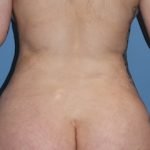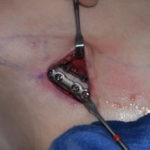Maxillary Bone Contouring after LeFort I Osteotomy
A Lefort I or maxillary advancement osteotomy is one of the most commonly performed orthognathic surgery procedures. By making a bone cut above the roots of the maxillary teeth, the entire upper jaw bone can be separated from the midface bone above it and moved based on the palatal and mucogingival soft tissue attachments. Read More…


